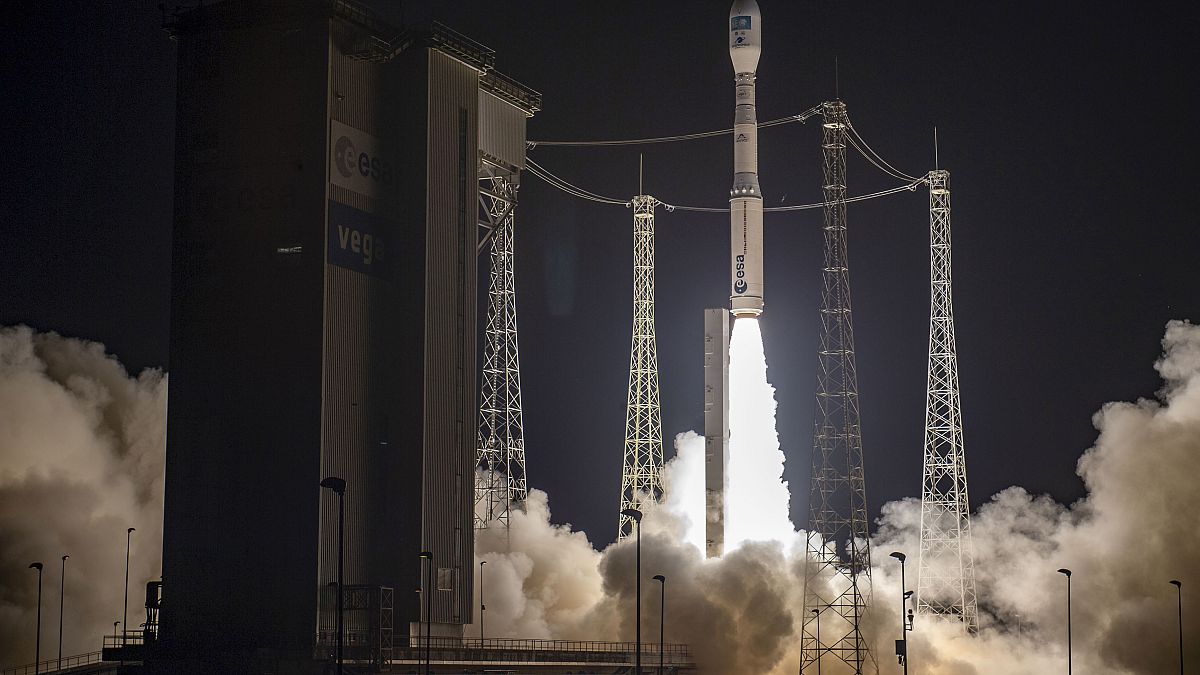The Vega small-satellite launcher is taking off for its swansong mission on Thursday morning.
Europe’s Vega small-satellite launcher is preparing to lift off on its final mission.
The European Space Agency (ESA) will launch the Vega’s swansong mission, the VV24, around 3.50 am CET on Thursday.
Vega is carrying a 2-C Copernicus satellite that will send images back for various types of scientific research, like monitoring the decline of Earth’s ice, according to ESA.
The 2-C is replacing the Sentinel 2-A, one of the two models currently in orbit.
The 2-C satellite should be released into orbit from Vega about 57 minutes and 20 seconds after liftoff. Ground crews expect to connect to the satellite with a signal 12 minutes later.
The launch was initially scheduled for Tuesday but was delayed because of electrical issues on the ground, ESA said.
The original Vega
The Vega rocket comprises four stages, or parts: the first three are propelled by solid propellant motors, and the last uses liquid propulsion.
Once this last mission is completed, the Vega rocket will have flown for 22 missions since its introduction to the ESA fleet in 2012.
The Vega was the first rocket managed entirely by ESA. The craft is now operated by Arianespace, who will now be transferring responsibility to Italian designer Avio.
One of ESA’s most important Vega missions was 2013’s Proba-V mission, which saw a small satellite launched into orbit to map land cover and vegetation growth around the globe every two days.
Another milestone for the rocket was 2018’s historic “Proof of Concept” launch, where Vega deployed 53 satellites into orbit on one single flight from various ESA customers using a new demo payload dispenser.
Vega-C back in service by year’s end
The Vega is being retired in favour of Arianespace’s newer younger rocket, the Vega C.
The latter measures 35 m high, can carry payloads of roughly 2300 kg into orbit, and can accommodate many types of cargo on board.
The Vega-C has some “major enhancements” from its oldersister Vega: two new propulsion stages, a new fairing at the top of the rocket, and new ground infrastructure at the ESA base in Kourou, French Guiana.
ESA says the Vega C rocket will help Europe’s independence in space because it “supports new mission possibilities”.
For example, the rocket supports the Space Rider, ESA’s new reusable technology that can return passengers or cargo to Earth without burning up on re-entry to the planet’s atmosphere.
The Vega C had its inaugural flight on June 13, 2022, but its second launch in December 2022 failed two minutes and 27 seconds into the mission.
A subsequent investigation concluded the Vega-C was not fit to fly until manufacturer Avio repaired the nozzle of its Zefiro 40 engine.
Avio said in a May 2024 statement that the motor has an “improved engine nozzle design” that will successfully return the launcher to flight “by the end of 2024”.
The Vega-C will be one of two in ESA’s “family of launchers” along with the Ariane 6, a bigger rocket for heavier payloads.

